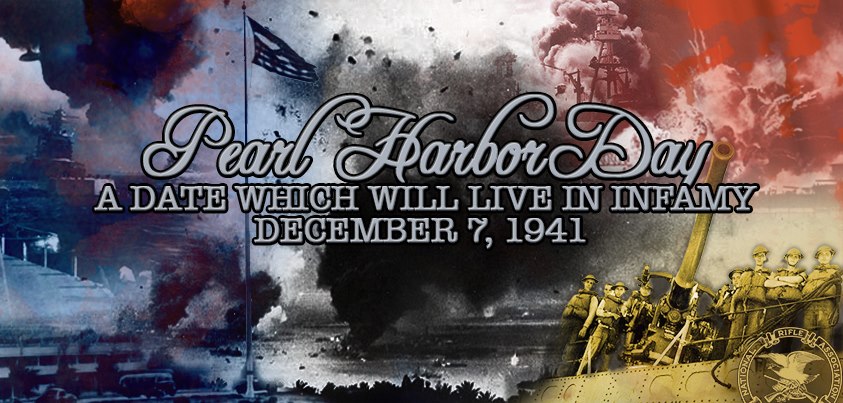

REMEMBERING PEARL HARBOR
SONGS FROM THE ERA.....
Kay Kyser Orchestra~Praise The Lord And Pass The Ammunition
please go to the top of the thread.
made on the thread. Thank you!


Alton Glenn Miller (1904-44) was an Iowa boy. His family moved to Missouri, and Glenn made enough money from milking cows to buy his first trombone and play in the town band. His family moved to Colorado where Glenn went to high school. In the fall of 1919, he joined the high school football team which won the Northern Colorado Football Conference in 1920. He was named the Best Left End in Colorado.
This was another boy who could have gone on to the early NFL, but during his senior year Glenn became interested in dance band music and formed his own band with some classmates. By the time Glenn graduated high school in 1921, he had decided to become a professional musician. In 1923 Glenn entered the University of Colorado at Boulder, but he spent most of his time attending auditions and playing any gigs he could find.
He dropped out of school and concentrated on making a career as a professional musician. Glenn spent time with several bands, but the most important was Victor Young’s Los Angeles studio orchestra. This allowed him to be mentored by other professionals. In the beginning, he was the main trombone soloist of the band, but when Jack Teagarden left, Glenn found that his solos were cut drastically.
He moved on, earning a living working as a freelance trombonist. This was when he rubbed shoulders with the Dorsey Brothers, Bing Crosby, Eddie Condon, Gene Krupa and Coleman Hawkins.
Glenn settled into a relationship as a trombonist, arranger and composer for the Dorsey Brothers. In 1935 he assembled an American orchestra for British bandleader Ray Noble, developing the arrangement of a lead clarinet over four saxophones that eventually became the sonic keynote of his own big band. Glenn made his first movie appearance in the Paramount film “The Big Broadcast of 1936" as a member of the Ray Noble Orchestra.
Glenn went out on his own in 1937, but his band didn’t catch on, and it broke up shortly after. Dejected, Miller went to New York. He realized that he needed to develop a unique sound and decided to make the clarinet play a melodic line with a tenor saxophone holding the same note, while three other saxophones harmonized within a single octave. George Simon discovered a saxophonist named Wilbur Schwartz, and Glenn hired him, but instead had him play lead clarinet. According to Simon, "Willie's tone and way of playing provided a fullness and richness so distinctive that none of the later Miller imitators could ever accurately reproduce the Miller sound." With this new sound combination, Glenn Miller found a way to differentiate his band's style from the many bands that existed in the late Thirties. Glenn talked about his style in the May 1939 issue of Metronome: "You'll notice today some bands use the same trick on every introduction; others repeat the same musical phrase as a modulation into a vocal. We're fortunate in that our style doesn't limit us to stereotyped intros, modulations, first choruses, endings or even trick rhythms. The fifth sax, playing clarinet most of the time, lets you know whose band you're listening to. And that's about all there is to it."
In September 1938, the new Glenn Miller band signed with RCA Victor. Then in the spring of 1939, the band hit the jackpot at the Glen Island Casino in New Rochelle NY. Some 1800 people packed the venue the first night. By 1939 Glenn’s band broadcast on CBS three times a week. Glenn Miller’s band was sometimes characterized as “the Republican Party of Big Band music,” which is probably why my father liked them so much.
Glenn joined the military and put together an Army Air Force band. He had the misfortune of flying beneath a bomber that was flying over the English Channel when it dumped its load of un-dropped bombs into what the pilot thought was unobstructed water.
This song by Harry Warren was one of a long string of hits for Glenn Miller, and it won him a gold record. The video is from “Sun Vallley Serenade”, and you’ll spot the young Milton Berle in the opening.
Some dissenting opinions, recorded by the Almanac Singers in the spring of 1941